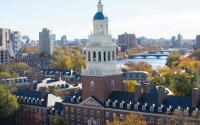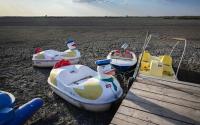30 June 2008TruthdigDr. Reese Halter
The hundreds of fires hitting California right now are a wake-up call to both government and California residents: we're unprepared for a rapid climate change crackling at our doorstep.
The facts are unequivocal, and point to a troubling future ahead. Over 850 fires, scorching some 200,000 acres, have set a new 2008 record for early-season wildfires in California. And from March to May precipitation has been the lowest since the inception of record keeping in 1894. In California as well as throughout the West, mountain snowmelts are occurring earlier, and winter storms are arriving later, extending the fire season by at least several weeks.
On June 5, 2008 Governor Schwarzenegger declared a state-wide drought. Droughts fuel wildfires. Across western North America global warming has caused prolonged droughts - some areas are now entering their 13th year - and warmer temperatures. These are the same kind of conditions that led to the mega fires of 2003 and 2007.
What's more, in California and throughout the West, millions of acres of drought have created tinder-dry kindling through weakened forests that have been ravaged by billions of indigenous bark beetles and disease. Currently, there is no serious policy being implemented to clear out these dead trees, fireproof communities and inform residents of a plan of action.
Why is this happening?
A mismanaged forest policy has suppressed the natural occurrence of fire, and as a result, many of our California forests are overstocked, and now tinder dry. When lightning strikes occur in combination with drought, mega-fires can't be far away.
Meanwhile, global warming is known to fuel mega-wildfires, particularly in the northern Rocky Mountains. In addition, over the past two decades mountain ecosystems across the West ranging from 5,300 to more than 8,000 feet above sea level have had the largest increase in big fires. It is these mountain ecosystems that are important for retaining snowfall and releasing it slowly into reservoirs. There are at least 350,000 homes in California that are on the urban/wildland interface and they remain at high risk to ever-increasing threat of wildfires.
Global warming is also significantly impacting our security by impinging upon our water supply. Even though average snowfalls in California from December to February of 2008 were recorded, by May state-wide water reservoirs that feed, drive and grow the state's economy - the eighth mightiest on the planet - were only slightly above 53 percent of their respective capacities.
The drought from March to May along with warmer temperatures evaporated at least 30 percent of the Sierra Nevada snowpack - which accounts for the brunt of California's annual water supply - directly into the air by-passing the solid (ice) to liquid (water) phase.
While the California House and Senate continue to debate where the state will secure more water for our future, we are running out of time.
Across the state the moisture content of grasses and brush are near or at 5 percent (usually at this time of year they should be around 20 percent) - conditions mimicking tinder-dryness usually found in October - at the end of the fire season.
What can Californians do at the state and local level? The state needs to mobilize its massive prison population to help thin out the overstocked forests and fire-proof the communities most at risk. The state needs to significantly beef-up its fire protection and emergency system because, like it or not, wildfires burning with greater ferocity and higher intensities and more prolonged droughts are on their way. At the local level, every home-owner can help removing dead trees, excessive brush, overhanging vegetation on roofs and keeping fuel cans at least 100 feet from homes. There's no room for carelessness, whether it's making an illegal campfire, lighting firecrackers this 4th of July or tossing lit cigarettes out a car window. We need to come together to solve this problem before anyone else loses a home, or even a life.
-------
Dr. Reese Halter is the author of the upcoming book "Save Money - Go Green." He can be contacted through www.DrReese.com.






